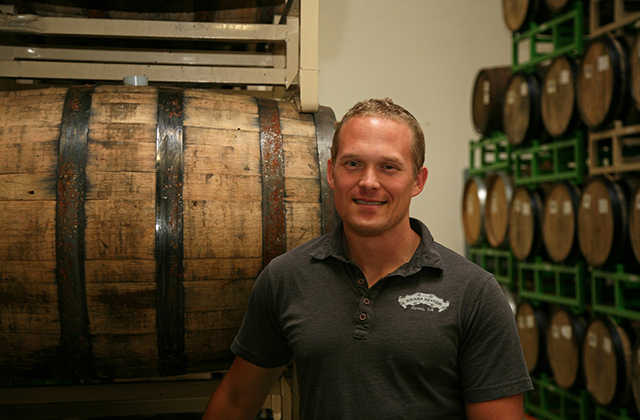
As the craft beer industry takes a look back at 2016 it will see although there was growth in volume and sales, the percentage of growth dipped. It will also look back to see the continuance of larger breweries sinking money into other breweries either through investments or acquisitions.
Heading into 2017, some breweries stand tall and tout its independence while those that have been acquired point to the positives. Both sides agree that it’s a brewery’s choice to make that decision based on what type of financial situation its is in.
Off the mainland, Maui Brewing continues to grow and says it is proud of its culture and independence after an expansion that gives it a capacity of 100,000 barrels and founder Garrett Marrero said he is sad by some of the sales that have happened.
“If the brewery has built a solid business and hasn’t handcuffed themselves to too much debt then staying independent is simple,” he said. “Several of the sales that have taken place happened because the brewery had to sell. Some of these breweries did one or a combination of all in borrowing too much, not being able to borrow anymore, didn’t have sales meeting cash flow requirements and the like.”
He noted there are options for those wishing to sell and seeking the highest price or seeking the best option and value for their company.
“If you’ve built a business and simply want the highest dollar value it’s very different than a seller looking for the best option for his team that helped build the company, his drinkers/brewery fans, and the industry; taking these into consideration may yield a lower monetary value but you really can’t buy integrity,” Marrero said. “We’re starting to see other options be created for those in that realm, no longer is it merely PE or strategic partners.
“Funds are being created that although backed by private money understand the familial nature of craft and don’t seem to be concerned with the “turn and burn” or “pump and dump” mentality commonly associated with PE. This is going to mix the game up a bit for sure in giving those that wish to preserve culture and seek value a viable alternative.”
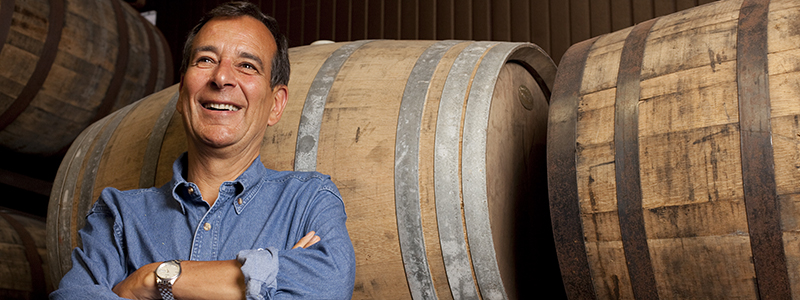
That sentiment is echoed by Harpoon Brewing president Charlie Storey, who said that craft brewers may chose to stay independent for multiple reasons.
“To stay in control of their destinies, provide continuous employment for their employees, ensure the continuation of their company culture, maintain the identity of their brands, and fulfill any other obligations — actual or implicit — they may have,” he said. “Provided a craft brewer is financially healthy and can meet his/her goals, staying independent is simply a choice.”
Thousands of miles away from Maui and down the coastline from Harpoon is a different opinion on the topic of independence in Devils Backbone COO Hayes Humphreys, whose 8-year-old brewery in Virginia was acquired by Anheuser-Busch in April, 2016.
Humphreys said, yes, it is a choice. It was a choice made after doing due diligence and tracking the numbers for the future growth of the company.
In 2015, Devils Backbone expanded capacity from 60,000 barrels to 150,000. It cost about $10M and upon completion of that expansion, it became clear that the company would immediately need to find another $10-15M to expand its warehouse and logistical operation. That warehouse expansion has now led to a packaging line upgrade at the cost of several more million.
“So, you can see how these things snowball,” Humphreys said.
Humphreys contends that craft beer seems to be one of the few industries where partnering with a more established company has such a negative perception.
“No one swore off Instagram when they were bought by Facebook,” he said. “I find it interesting that craft brewers who partner with brewers that have centuries-old track records of making beer are perceived to have “sold out,” while those that partner with private equity, who simply view craft brewers as financial assets, are allowed to remain in the club.
“I’m not the first to suggest that the industry is in for a rude awakening when those firms look to monetize their assets. With craft slowing down, multiples may start to fall, which will accelerate the second shoe drop.”
And why would a brewery stay independent, Humphreys questions.
“That’s obviously a question for each owner to decide,” he said. “At this moment, there’s a perception that independent equals quality. In truth, the standard of quality and precision that ABI will hold us to is far superior to anything we could have hoped the achieve on our own. From a safety standpoint, I had no idea how seriously craft breweries were inadvertently sacrificing the safety of their employees. That sort of corner cutting is not acceptable to our new partners, and now that we know better, it’s unacceptable to us.”
Humphreys added that for some breweries, selling part of or all of its business is not always the option to take.
“Once you take someone else’s money, it’s hard to be truest independent,” he noted, pointing out that a brewery looking toward the future needs to be extremely well capitalized up front to afford the cost of growth; grow slowly, even if the market is growing quickly, with a mind on the next expansion; staying small to avoid the cost of growth; and contract brew so the overhead and investment in physical brewing capacity is eliminated.
“Independence and craft brewing go hand in hand,” Storey said. “It’s important for us to have a relationship with our consumers, and vice versa. We appreciate the fact that people can come visit our breweries, and see the people who started this brewery running it.”
After IPA, what’s next?
Hayes: IPA is the king of craft, but Lager is the best selling beer style in the world, period. So, my guess and hope is that we will continue to see lagers and sessionable ales rise. To grow, craft needs to offer the consumer an alternative to hops. Lagers (and styles like Golden Ales) offer that alternative. Look at what “805 Blonde” (by Firestone Walker) has done in California. The caveat to that is that there has to be a perceived value. A golden lager that is $4 more per 6-pack and doesn’t offer a lot more to the consumer than that cheaper 6-pack won’t make it.
I also think creative flavors will stick around, but not every proliferation. Vodkas did it a few years ago, then the “Ritas”, and now sodas. Most of the flavors fade, but a few standbys will make it out. I think sodas will fade, session IPAs will fade, and I don’t think sours are a promising way expand the category (although I love them). There should and will be more spirits and wine crossover and barrel aging.
Storey: The variety of beer styles available to the craft beer drinker is vast. We see a growing interest in styles that resemble Golden Ales or Pilsners in terms of their taste profile and approachability, and have added one – sweet spot golden ale – to our lineup.
Marrero: IPA is clearly the king still. I read something like 57 percent of the craft beer segment is the IPA family, not sure how accurate that is but when you look around you sure see a ton of them. I love IPA so I’m not sad about it. We’re seeing a huge demand for American Sours and “wild” beers as well, the rebirth of so many older styles such as Gose and Berliner Weisse will continue to gain traction and be highly sought after brews.
I do still see a huge demand and lack of focus on properly brewed Lagers, Pilsners, Kolsch and the like. We’ve always kept at least a few lagers on tap, our “Munich” Helles, “Bikini Blonde” Lager, and our Pilsner “Pau Hana Pils” have always been “go to” beers for many. It’s important to not only have beers that are familiar to non-craft drinkers but also to have something on tap for beers of lower ABV that doesn’t sacrifice character at all. The “Session” beer is great at this as well but it’s clearly a different animal that sitting down and enjoying a nice crisp, hoppy and CLEAN pilsner… or 4.
How can craft beer continue to grow?
Jim Koch, Found & Brewer of Sam Adams: We’ve grown for 32 years because we continue to innovate by being the first American brewer to barrel-age beer, create a seasonal program and legible freshness dating, and bring beers like our Nitro Project to drinkers nationwide. When I founded The Boston Beer Company, I said that our mission was to fight the apathy of the American beer drinkers’ palates by innovating and brewing flavorful, quality beer. Now as the leading independent American craft brewer, our mission remains the same. This mission has also become the hallmark of craft brewers nationwide and the standard for craft beer drinkers. So long as craft brewers like Sam Adams continue to innovate and brew high-quality beers, the industry will continue to grow.
Storey: Focus on quality, flavor, and stay fun. Craft can grow if the core consumer base expands, and more mainstream beer drinkers occasionally cross into the craft category. Craft beer must maintain its relevance with young consumers against growing competition from wine and spirits.
James Conery, Department Supervisor, California Brewing for Sierra Nevada: “This is the golden question in our industry right now. In my opinion it is going to come down to exploring new avenues and styles, while engaging in continuing to attract and educate drinkers, including attracting and converting macro drinkers as well as continuing to work together to foster a culture of amazing beers of every style.
Marrero: In the end it again goes back to quality and transparency, connecting with your fans and craft beer drinkers as a whole. In a recent article I read it stated that 61 percent of buyers consider “Local” to be a key buying decision. Unfortunately not everything marked as local actually is. That’s where transparency and education come in. Generally we are predisposed to support the small, local companies and buyers have a general mistrust of large MNC businesses. That will work to be an advantage for the small, independent craft brewer.
Quality is critical as we need to make sure craft beer is always putting its best foot forward. When someone new to craft beer gets a poor quality product we could lose them forever. We need to re-raise the bar of quality across the entire industry.
Humphreys: Craft also needs to help grow beer as a category and not just celebrate taking share points from the big guys. Yes, craft can go further by stealing share from the big three, but it will get further in the long term if we reverse the shrinking beer share and make some inroads with any demographic group that isn’t white men. The 100 percent focus on the 1 percent craft “elite” is insane. Long term, it’s worse than a zero sum game if we can’t get beer share growing versus wine and spirits. Craft won’t be able to do that if the Brewers Association wants to wage war against the other 88 percent of the market.
For craft to grow long term, we have to get people out more, which means working with municipalities to promote public transit and creative solutions like Uber. Also, dammit, we should all be able to drink a beer at lunch and not have it be a big deal!
Legislation look ahead
Marrero: Nationally I think it’s important to follow the Craft Beverage Modernization and Tax Reform Act. … We need to modernize these laws to fit the current landscape of American craft beer. Our industry has created countless jobs across the country and contributed heavily to the U.S. economy. It’s time for some change.
Locally we’re looking at tax legislation as Hawaii as one of the highest rates in the country, approx $2.09 per case! Our local economy has been dominated with service industry and military jobs but we’ve seen a mass exodus of manufacturing jobs. The tax is a disincentive to producing in Hawaii right up there with the highest costs of energy, labor, insurance, shipping, etc. Also, tying into our transparency initiative is a labeling bill that should require a statement as to where the beer you’re drinking was produced. Plenty of beers masquerade as craft but also “local.” Craft beer drinkers deserve to know the truth in order to vote with their dollars based on accurate information.
Humphreys: Virginia brewers are on constant guard for threats to SB604, the bill that allows production breweries to have taprooms without food. I believe the greatest threat to a brewer’s taproom is currently brewers themselves. There’s so much on-premise volume disappearing, and while some of it is just gone, a lot of it now flows outside the three-tier system through taprooms. Since SB604 passed in Virginia, less than 1 percent of the 130-plus brewers that have opened have been brew pubs. Every dollar that flows through them is a dollar out of wholesalers and other retailers pockets. When one tier antagonizes the other two tiers, nothing good can happen.
Early on, when there were fewer breweries, you could make the case that taprooms helped build the brand and both retailers and wholesalers benefited from that. Now though, take the Scott’s Addition neighborhood in Richmond: there are five breweries in close proximity, none of whom distribute outside of their four walls in a meaningful way. That means the brand building no longer benefits the other tiers. To make matters worse, these taprooms, which were originally proposed as consumer education opportunities, now host musical acts and food trucks regularly. They look a whole lot like restaurants, except they don’t have to following the same health department regulations, nor the same code guidelines as restaurants (such as the number of parking spots per seat). Unchecked, I think taprooms in Virginia will make a lot of powerful enemies.
Where Can Craft Beer Improve?
Koch: I think some small breweries starting out today focus too much on the marketing and less on the beer itself. We waited more than a decade after we launched Boston Lager before we hired our first marketing person. I always tell small breweries that we coach through our Samuel Adams Brewing the American Dream program to focus first on brewing great beer and then working your butt off to sell it. People don’t drink the marketing, they drink the beer.
Humphreys: Craft beer simply needs to become more professional when it comes to sales and marketing programs. Way, way too many guys are still running out to major retailers like Kroger and playing the card of “I’m the local guy, put me on the shelf.” Well, guess what? There are now 12 local guys; they all make IPAs, and they’re all great guys. So, why should a retailer or a wholesaler expect a consumer to buy your beer vs. the other guy? They shouldn’t, and people are starting to see that. Wholesalers are saying no to brands, and even retailers are beginning to balk at new additions. Just because your beer is good, or even award winning, doesn’t mean people will buy it. If craft wants to keep stealing share, they’re going to have to become more purposeful in launching new products and supporting their existing brands with better programs.
Storey: As the number of breweries continues to soar, the challenge of maintaining high standards of quality and freshness becomes even greater.
Garrett: We have seen record entrants into the industry, many of whom lack the experience. We have many self proclaimed “brewmasters” that have zero formal training and the leap from homebrewing to production is a significant jump. Unfortunately there are so many new breweries that there is a serious lack of well-trained, experienced brewers to hire. This has led to some pretty bad beer in the marketplace. As we continue to attract new craft beer drinkers many do not really know what “good beer” is versus “bad beer.” I’ve seen a lot of marketing of newly created styles around beers resulting from techniques or lack thereof that would normally be considered improper. In some cases the beer tastes great in others not so much.
Another area that continues to develop but something we can all work on together is education of our craft beer drinkers and creating transparency across the industry. An educated craft beer drinker is going to drive the aforementioned quality issue while transparency with them will at least keep the awareness at the front of mind regarding “faux craft” and the importance of supporting the small, independent craft brewers.
What are your plans for 2017?
Marrero: Our biggest focus outside of brewing right now is energy. We’ve committed to taking the brewery to a grid independent status over the next several years. This means a nearly 1.2 megawatt microgrid complete with Tesla battery storage and Cummins backup generators. Here in Hawaii it certainly does pay due to the grossly high cost of power but more importantly it is the responsible way manufacture leaving as minimal a footprint as we can. It also provides a solid foundation for controlling expenses and securing the company’s energy independence. All that while at the same time creating a safe, secure and solid future for our team. We’re also working on CO2 recovery to drastically eliminate the venting of CO2 created in fermentation. This is an often overlooked and accepted contribution to greenhouse gas release that we intend to eliminate. A large solar thermal array is also being constructed in order to generate the hot water needed for brewing and cleaning. This will decrease propane gas consumption by around 75% as well. Another significant step towards energy independence and “doing no harm”.
Storey: We will be fully operational in two new markets, Wisconsin and Minnesota. We are also excited about increased focus for our UFO brand, and continued trend improvement for our flagship IPA.
Humphreys: I think the next 24 months will be wild. It’s not going to break craft, but I think the most successful folks on the other side will be the ones who focus on what they do well and keep doing it better.We’re actually making bigger bets on fewer products. We only have so much ability to focus and influence, so we’re hoping to do more with less. Vienna Lager, which just won another GABF Gold, is 65 percent of our business, so it’s going to get the attention it deserves with a full-year marketing plan. We’re refreshing both of our seasonal lineups: the Daypack Series, our sessionable canned seasonal line, is getting Pear Lager in the spring. The Trailblazers, our limited release seasonal line, is getting 16 Point Imperial IPA. Our variety package, the Adventure Pack, is on fire right now, and next year we’ll be doing two sets of collaborations to fill the variety pack: first with all Virginia breweries and second with our High End craft partners.
Koch: We’re in a unique position because we have the passion, attention to quality and mindset of a craft brewer, and also have the resources to be able to continue to innovate, push quality and freshness – and continue to introduce great beers to the American beer drinker. In 2017, we’re excited to introduce two new seasonals to drinkers, Fresh as Helles and Hopscape IPA, as well as new IPA (Rebel Juiced) that came from experimenting in our nano brewery.
Editor’s Note: An edit was made to Hayes Humphrey’s final comment. Devils Backbone will not be releasing 1949 Lager in packaging this year as previously planned.


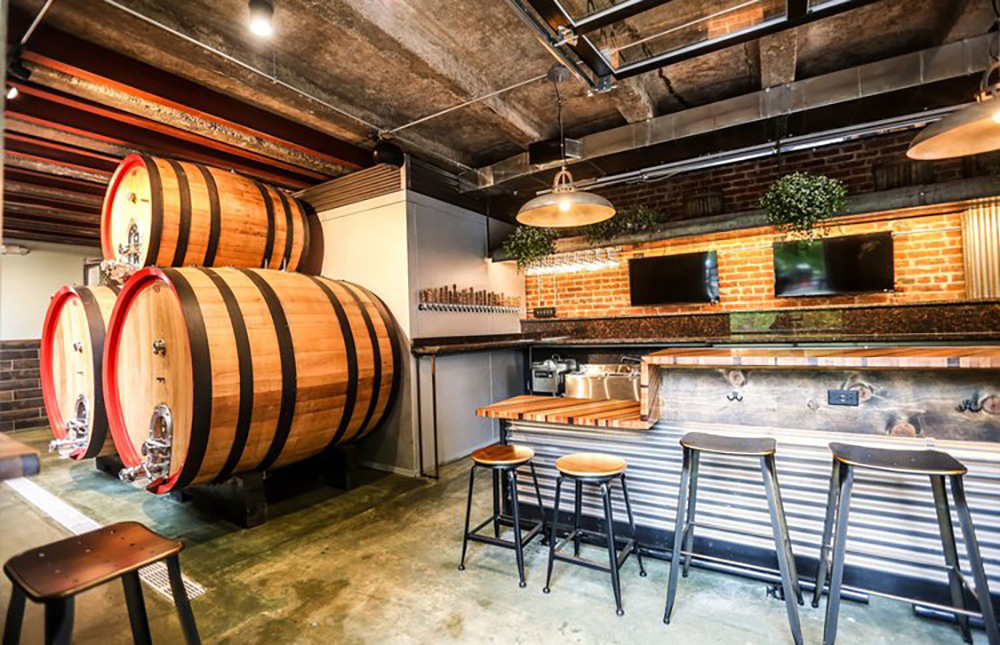
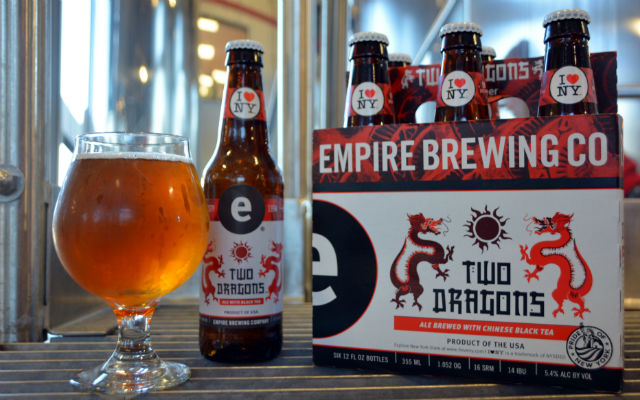
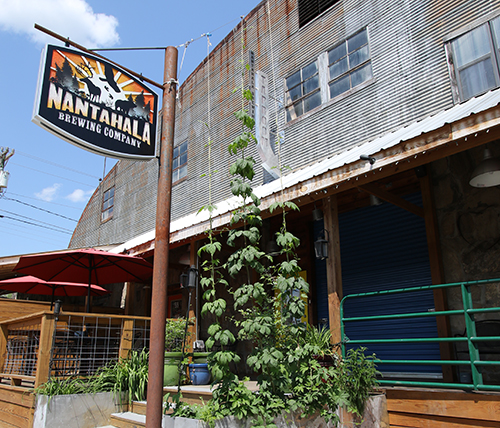
Be the first to comment